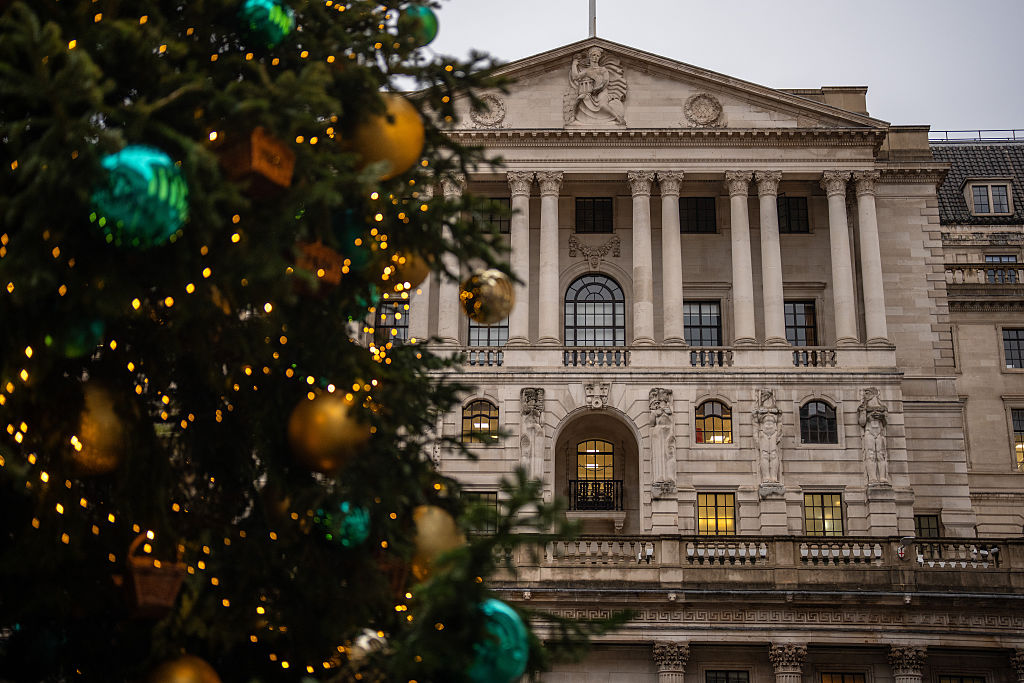Top funds to add to your ISA or SIPP before the end of the tax year
Last-minute ISA or SIPP investors have until 5 April to use up their annual allowances. Which funds do the experts think are best?


Investing in an ISA or self-invested personal pension (SIPP) is one of the best ways to shield your investment income and capital gains from the taxman. Dividend and capital gains allowances have been slashed in recent years, making these wrappers more valuable than ever.
But which funds or stocks are worth adding to your portfolio? With thousands of funds, ETFs and trusts on the market, it’s a tricky decision.
Several investment platforms publish best-buy lists which can help you narrow down your search for the right funds – whether you’re researching for an ISA, a SIPP or a different kind of investment account. These are useful tools and can simplify your research process considerably.
MoneyWeek
Subscribe to MoneyWeek today and get your first six magazine issues absolutely FREE

Sign up to Money Morning
Don't miss the latest investment and personal finances news, market analysis, plus money-saving tips with our free twice-daily newsletter
Don't miss the latest investment and personal finances news, market analysis, plus money-saving tips with our free twice-daily newsletter
“Investors looking to make their investment portfolios as tax-efficient as possible in the run-up to the tax year end may find selecting the right mix of investments aligned to their attitude to risk a daunting task, particularly if they are trying to make their choices in hurry,” says Jason Hollands, managing director at investment platform Bestinvest.
“That’s where the Best Funds List can come in handy as it offers DIY investors a snapshot of the top funds, trusts and ETFs in each of the main sectors chosen by our research teams as well as a smattering of options with ESG strategies.”
Research teams typically meet with fund managers, analyse the market environment, and delve into the fund’s investment process, performance and risk-management approach.
These are some of the top funds to consider according to Bestinvest’s latest best funds list, published on 31 March. If you are looking at which funds to avoid, you can also peruse the latest spot the dog report.
Top funds to consider
Nineteen funds from the best-buy list are highlighted below, grouped by region and asset class. Bestinvest’s full list can be found in the online report. The report also summarises how each of the below funds invests, and what it charges in fees.
UK equities
- BlackRock UK Income
- Fidelity Special Situations
- Artemis UK Select
- Temple Bar Investment Trust
Fixed income
- iShares Core UK Gilts UCITS ETF
- MI TwentyFour Dynamic Bond
Europe
- Fidelity European Trust
- LionTrust European Dynamic
Japan
- M&G Japan
- JPMorgan Japanese Investment Trust
Asia & EM
- Templeton Emerging Markets Investment Trust
- Schroder Asian Total Return Investment Company
North America
- Premier Miton US Opportunities
- Xtrackers S&P 500 Equal Weight UCITS ETF
- GQG Partners US Equity
Global
- Fidelity Index World
- Loomis Sayles Global Growth Equity
Real assets
- Invesco Physical Gold ETC GBX
- 3i Infrastructure
Funds dropped from the best-buy list
The following funds featured on the best-buy list in September 2024, but have since been dropped:
- FSSA Asia Focus
- Barings Europe Select Trust
- Baillie Gifford Global Discovery
- TM Redwheel Global Emerging Markets
- Fidelity Index Japan
- Jupiter Japan Income
- iShares Core MSCI Japan IMI ETF
- Octopus Renewables Infrastructure Trust
- Renewables Infrastructure Group
- M&G Positive Impact
- Ninety One Global Environment
- Liontrust UK Growth
- WS Lindsell Train UK Equity
New best-buy funds added
These newcomers have been added to the list since the last edition:
- Vanguard Global Small-Cap Index
- Goldman Sachs Sterling Liquid Reserves
- iShares MSCI World Energy Sector ETF
- JPM UK Equity Core ETF
- Xtrackers MSCI World Communication Services ETF
- Xtrackers MSCI World Financials ETF
- Xtrackers MSCI World Momentum ETF
- Xtrackers MSCI World Quality ETF
- Aberforth Smaller Companies Trust
Key things to consider when researching funds
While a best-buy guide is a useful tool when researching funds, it doesn’t tell you everything you need to know. Before deciding which funds to invest in, DIY investors should think carefully about their objectives and their asset allocation.
Are you looking to achieve growth or income? How much risk are you willing and able to take? What combination of different assets can help you achieve this?
Once you have your strategy nailed down, that’s where a best-buy guide comes in.
If you aren’t sure and don’t have much experience with DIY investing, you might be better off opting for a managed ISA or SIPP, where an investment professional selects funds on your behalf based on a predefined risk profile.
Alternatively, you could benefit from investment advice. This can be expensive but is often a good option for those with significant assets to invest. A robo-advisor could be a cheaper option than speaking to a person for those with a smaller pot, or more straightforward affairs.
Whatever you do, don’t rush into selecting investments at five to midnight on 5 April – you can still take advantage of your allowances without making a panicked decision you could live to regret.
“If you’re rushing to open an ISA, it’s not necessarily the ideal time to be thinking carefully about your longer-term investment strategy,” says Sarah Coles, head of personal finance at investment platform Hargreaves Lansdown.
“Before the deadline expires, you can put money into a stocks and shares ISA as cash, and move into your chosen investments when you’re ready to make the most of your money,” she adds.
How much can you put in an ISA and pension?
The annual ISA allowance is £20,000. You can stash this all in one account or spread it across a number of different pots – including cash ISAs, stocks and shares ISAs, and even a lifetime ISA (which has a lower allowance of £4,000 and slightly different rules).
Pensions work slightly differently. You can put as much money as you like into your pension pots each tax year, but you will only benefit from tax relief on up to 100% of your earnings or £60,000 – whichever is lower.
Pension tax relief is effectively a rebate you get on pension contributions, where HMRC “refunds” the income tax you would otherwise have paid on the money when you earned it. For example, if you are a basic-rate taxpayer and contribute £80 to your pension, HMRC will gross it up to £100.
Some people have a lower annual pension allowance, for example if they have already accessed their pension pot or earn over £260,000 in “adjusted income” (total income plus the amount your employer pays into your pension).
Those who have already accessed their pension and triggered something called the “money purchase annual allowance” can only benefit from tax relief on contributions up to £10,000. Meanwhile, those on a high income lose £1 of the allowance for every £2 of adjusted income they earn over £260,000.
As always with tax, the rules are complex – but one good perk is that you can often roll forward unused pension allowances from the past three tax years. Your income will still need to be higher than (or equal to) the amount you want to pay into your pension.
It is worth taking advantage of your tax-free allowances if you can. Any investment income or capital gains earned in an ISA or SIPP is tax-free, and pensions also offer a valuable top-up on the way in.
Get the latest financial news, insights and expert analysis from our award-winning MoneyWeek team, to help you understand what really matters when it comes to your finances.
Katie has a background in investment writing and is interested in everything to do with personal finance, politics, and investing. She previously worked at MoneyWeek and Invesco.
-
 £100 contactless card limit to be lifted
£100 contactless card limit to be liftedConsumers will be able to set their own contactless limits from March 2026, under new rules from the Financial Conduct Authority
-
 MoneyWeek news quiz: How much did the Bank of England cut interest rates by?
MoneyWeek news quiz: How much did the Bank of England cut interest rates by?Quiz Interest rates, inflation, unemployment, and bank closures all made headlines this week. How closely were you following the news?
